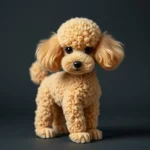
Dog breeds have played a significant role in Australia’s history and culture, providing companionship, working abilities, and a unique connection to the land. Understanding Australian dog breeds not only enriches our knowledge but also helps prospective dog owners make informed choices about which breed may best fit their lifestyles. This article will delve into the history of dogs in Australia, explore popular and lesser-known breeds, and provide guidance on choosing and caring for an Australian dog.
History of Dog Breeds in Australia
Early Introduction of Dogs to Australia
Dogs have been part of the Australian landscape for thousands of years. Indigenous Australians had their own unique breeds, such as the Dingo, which played vital roles in their culture, from hunting to companionship. The Dingo is believed to have arrived with early human settlers from Asia, adapting to the diverse Australian environment.
With the arrival of European settlers in the 18th century, various breeds were introduced, contributing to the rich tapestry of canine history in Australia. These settlers brought their working dogs, such as Collies and Terriers, which were used for herding livestock and protecting properties. This blending of breeds and the adaptation to local conditions laid the groundwork for the development of distinct Australian dog breeds.
Development of Unique Australian Breeds
The unique climate and geography of Australia have significantly influenced the evolution of its dog breeds. The harsh conditions, ranging from arid deserts to lush rainforests, required dogs that could adapt and thrive. Factors such as herding needs, companionship, and protection shaped the characteristics of these breeds, resulting in the emergence of dogs like the Australian Cattle Dog and Australian Silky Terrier.
The selective breeding of these dogs over generations has led to traits that are particularly suited to the Australian lifestyle, including resilience, intelligence, and strong work ethics.
Popular Australian Dog Breeds
Australian Cattle Dog
The Australian Cattle Dog is a remarkable breed known for its agility and intelligence. These dogs typically weigh between 35 to 50 pounds and possess a short, dense coat that can be blue or red. Their keen instincts make them excellent herders, capable of managing livestock with precision.
In terms of temperament, Australian Cattle Dogs are energetic, loyal, and protective. They require ample exercise and mental stimulation to prevent boredom. Regular training sessions not only help them channel their energy but also reinforce good behavior. Early socialization is crucial to ensure they develop into well-rounded companions.
Australian Shepherd
Despite its name, the Australian Shepherd was actually developed in the United States. However, it has strong ties to Australia, where it was bred to handle sheep herding. This breed is characterized by its striking coat, which can be merle, black, or red, and its expressive eyes.
Australian Shepherds are known for their intelligence and versatility. They thrive in active environments, making them ideal for families who enjoy outdoor activities. With proper training, they can excel in various canine sports and obedience competitions. Their affectionate nature also makes them great companions for children, ensuring a harmonious family life.
Australian Silky Terrier
The Australian Silky Terrier is a small breed with a long, silky coat, often seen in shades of blue and tan. Typically weighing around 8 to 10 pounds, they are compact and lively. Their charming personality makes them great companions, although they can be a bit feisty.
Silky Terriers require regular grooming to maintain their beautiful coats and prevent matting. They are intelligent and respond well to training, but they can be stubborn, so consistent and positive reinforcement techniques are essential. Their adaptability allows them to thrive in both apartments and homes with yards, making them suitable for various living situations.
Australian Kelpie
Renowned as one of the best herding dogs, the Australian Kelpie is a medium-sized breed known for its incredible stamina and work ethic. With a sleek, athletic build, Kelpies are often seen in black, chocolate, or red. They are energetic and require significant exercise to stay healthy and happy.
Kelpies are intelligent and highly trainable, making them excellent working partners on farms. They are also adaptable to family life, provided they receive sufficient physical and mental stimulation. Regular engagement in activities like agility training, obedience, or playing fetch is essential for their well-being.
Tenterfield Terrier
The Tenterfield Terrier is a small, agile breed known for its outgoing personality and loyalty. With a weight range of 10 to 12 pounds, this breed features a smooth coat that can come in various colors, including white, black, and tan.
Tenterfield Terriers are affectionate and social, making them great companions for families. They thrive in interactive environments and enjoy playtime with both adults and children. Regular socialization and training are crucial to ensuring that they develop well-rounded temperaments. While they are generally healthy, potential owners should be aware of common health issues such as patellar luxation.
Rare and Lesser-Known Australian Breeds
Australian Tzu
The Australian Tzu is a lesser-known breed that combines the traits of the Shih Tzu with those of the Australian Terrier. This small dog typically weighs between 10 to 15 pounds and has a charming, friendly demeanor. With a soft, long coat, they require regular grooming to keep their fur in top condition.
Australian Tzus are known for their compatibility with families and other pets, making them excellent companions. They are affectionate, playful, and thrive on human interaction. Regular exercise and mental stimulation are essential to keep them happy and healthy.
Australian Stumpy Tail Cattle Dog
The Australian Stumpy Tail Cattle Dog is a unique breed that shares similarities with the Australian Cattle Dog, but with a distinctively shorter tail. These dogs are strong and sturdy, weighing between 35 to 50 pounds. They were bred for herding cattle and possess a high energy level, requiring ample exercise.
This breed is intelligent and trainable, making them suitable for active families. They do well in homes with space to roam and engage in physical activities. Regular grooming is necessary to maintain their coat, and early socialization is vital for developing well-adjusted personalities.
Choosing the Right Australian Dog Breed
Assessing Lifestyle and Environment
When selecting a dog, it’s essential to consider your lifestyle and environment. Factors such as living space, daily activity level, and family dynamics play a crucial role in choosing the right breed. For instance, active families may thrive with breeds like the Australian Cattle Dog or Kelpie, while those in smaller homes might find the Australian Silky Terrier or Tenterfield Terrier more suitable.
Understanding the requirements of each breed, including their exercise needs and temperament, can help ensure a harmonious relationship between the dog and the owner.
Understanding Breed Temperaments
Temperament is a critical consideration when choosing an Australian dog breed. Each breed has its unique personality traits that can affect how they interact with family members and other pets. For instance, while Australian Shepherds are known for their intelligence and eagerness to please, they may require more training and mental stimulation than other breeds.
Socialization is also essential. Introducing your dog to various environments, people, and animals early on can help prevent behavioral issues later in life. Understanding and managing a breed’s temperament can lead to a healthier and happier relationship.
Health Considerations
Like any other breed, Australian dog breeds may be predisposed to certain health issues. Common concerns include hip dysplasia, eye disorders, and skin conditions. Regular veterinary check-ups and proactive health care are vital for maintaining your dog’s well-being.
Potential owners should research breed-specific health issues and consider adopting from reputable breeders who conduct health screenings. Understanding a breed’s health needs can help you provide the best care for your new companion.
Care and Training for Australian Dog Breeds
Basic Training Techniques
Early training and socialization are fundamental for Australian dog breeds. These dogs are often intelligent and eager to learn; therefore, positive reinforcement techniques work best. Short, engaging training sessions encourage dogs to learn quickly while keeping them motivated.
Obedience training, along with socialization with other dogs and people, is essential for developing a well-mannered pet. Consistency and patience are key, as Australian breeds may exhibit stubbornness if not properly guided.
Grooming and Maintenance
Grooming needs vary among Australian dog breeds. Breeds with longer coats, such as the Australian Silky Terrier, require regular brushing to prevent matting and to keep their fur healthy. In contrast, shorter-haired breeds, like the Australian Cattle Dog, may require less frequent grooming but still benefit from regular brushing to reduce shedding.
Seasonal changes can also affect grooming needs. For example, during shedding seasons, more frequent brushing may be necessary to manage loose fur.
Nutrition and Diet
Proper nutrition is crucial for the health and vitality of Australian dog breeds. Each breed may have specific dietary needs based on size, age, and activity level. High-quality dog food that meets the nutritional requirements of your chosen breed is essential.
Consulting with a veterinarian can help determine the best diet and feeding schedule for your dog. Ensuring a balanced diet can lead to a healthy and happy life for your Australian canine companion.
Conclusion
The diversity and uniqueness of Australian dog breeds reflect the country’s rich history and culture. From the hardworking Australian Cattle Dog to the charming Australian Silky Terrier, these breeds offer something for everyone. As potential dog owners, it’s essential to research and consider your options carefully, taking into account lifestyle, temperament, and health considerations. Owning an Australian dog breed can bring immense joy and companionship, enriching your life in countless ways.









